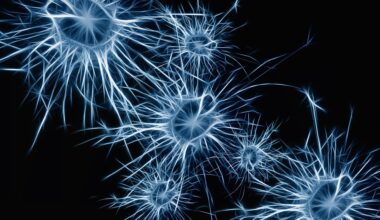The swelling of neurons in the brain is triggered by conditions like stroke or traumatic brain injury. Neuron swelling can cause these cells to die, resulting in extensive brain damage and even death. But until now, it hasn’t been clear what causes the death of neurons during injury-induced swelling.
Now, in a paper recently published in Cell Reports, Dr. Brian MacVicar and his team provide new evidence for the mechanisms of neuronal death by examining the role that a channel called Pannexin-1 (Panx1) plays in this process. This follows the first demonstration over 20 years ago in Dr. MacVicar’s lab of the involvement of Panx1 in contributing to the death of brain cells in stroke (Science 2006) and seizures (Science 2008).
Dr. MacVicar and his team found that the swelling of neurons generates oxidative stress, which is a harmful chemical reaction in the cells that triggers Panx1 channels to open and can then lead to the death of brain cells.
“However, Panx1 has a double-edged role because while it can kill the neuron, it also triggers a protective response,” says Dr. Nicholas Weilinger, a research associate in the MacVicar lab and the paper’s lead author. “Panx1 channels release a molecule called ATP, which is like a ‘help me’ signal drawing microglia to the swollen nerve cells.”
Microglia are immune cells in the brain. With finger-like projections that are constantly surveying the environment around them, they are part of the brain’s defense mechanisms and act like first responders to protect against harm.
The video above shows swelling in a single neuron (red) leads to increased protective contacts from neighbouring microglia cells (green).
“It’s been described as a soothing touch,” Dr. MacVicar explains. “When microglial cells touch the nerve cell, it repairs and protects the neuron from dying.”
In this study, researchers used a combination of electrophysiology to record electrical activity in neurons and two-photon laser microscopy to image the structure of nerve cells, which is important for quantifying how cells swell over time and also to observe how microglia respond.
When considering potential therapeutic targets, Dr. Weilinger notes that if Panx1 channels could be blocked from opening and causing the initial death process in the first place, this would mean that the microglia would not need to be called upon to save the cell. This is the quicker and more ideal intervention and holds a lot of promise down the road for translational medicine.
“On the other hand, one of the biggest outstanding questions is how the protective aspect of the microglia-neuron interaction takes place,” says Dr. Weilinger. “If we knew how the microglia were exerting its protective effect, then we could try to amplify this process to improve its healing power. This would be a huge breakthrough for many neurological disorders.”
To illustrate the devastating effects of brain swelling, Dr. MacVicar notes the example of race car driver Michael Schumacher, who suffered a traumatic brain injury due to a skiing accident in 2013. He had to undergo various surgeries and was also placed in a medically induced coma to reduce pressure and prevent his brain from further swelling.
“Current treatments for brain swelling are morbid and they only attempt to alleviate the swelling but don’t address the initial cause of the swelling,” says Dr. MacVicar. “So ultimately, if we can prevent neuron swelling in the first place, then we can prevent brain cell death.”


